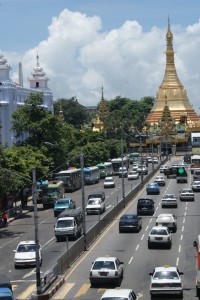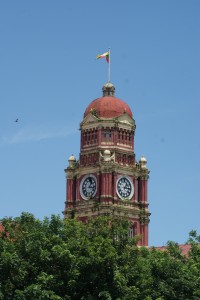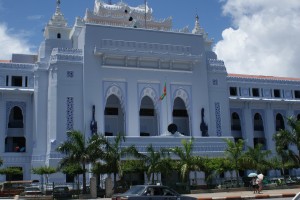TO NEW READERS OF THIS BLOG:
Welcome to the Myanmar / Burma section of the Blog. If you are considering a trip to Myanmar, I think you’ll learn a lot from my family’s own experience – we traveled to Myanmar in July/August 2011 for 26 days, and I have a total of 29 blog entries covering this trip including this entry. Entries cover Yangon, Bagan, Monywa, Mandalay, Hsipaw, Pyin oo Lwin, Kengtung (Kyaing Tong) and Inle as well as many observations on daily life and travel tips.
Enjoy, and feel free to contact me with any questions. – Gideon.
When I told people I was taking the family to Myanmar, the first reaction I had was “Where is that?”. When I said “Burma” the next reaction was kind of uncertain – yes, people had vaguely heard of that, but were not quite sure where it is, or what the capital is, but they figured it was a dangerous place anyway. For those who were more astute, their reaction was “but isn’t here a terrible government there?”
So this is what I said:
Myanmar (formerly called Burma, and still called Burma by much of the world and used interchangeably by me) sits between India, China and Thailand. It was a British colony for over 100 years, and yes, it does have an almost universally despised military government. On the other hand, it has an almost universally admired opposition, personified by Aung Sang Suu Kyi, the Nobel Prize laureate. Earlier this year, Aung Sang Suu Kyi was interviewed by the London Financial Times, where she called on people around the world to end the tourist boycott of Myanmar/Burma, so long as they traveled individually or in small groups only. (The reason being that large groups would be using government agencies, which she does not support).
With this information, I felt the time was right to heed her call and to go take a look.
This is what I knew of Myanmar/ Burma before I went:
1) A very interesting history – I had read ” The Glass Palace” – a great historical novel set in Burma at the time of the British occupation.
2) That its people are supposed to be incredibly, genuinely , unbelievably friendly.
3) That it has some of the most spectacular sights in Asia.
4) That the isolationist policies of the government have kept the country’s development at least 30-50 years behind its neighbors. This means that one can still see the “real Asia” as it was perhaps in the 1960’s or 70’s, before the arrival of mass tourism and mass development. In fact, Burma only receives about 300,000 visitors a year, compared with well over 10 million in Thailand.
So, we decided to go. Our main questions were:
Getting a visa: This was exceptionally easy – we emailed the Myanmar Embassy in Canada who emailed us back the forms and within 4 days of receiving our passports they sent back our visas. One has to get the timing right though – the visas are only valid within 3 months of being issued, so one should wait until say a month or two before travel to apply. Visas are valid for 28 days, more than enough time to see plenty of the country.
Safety: Just how safe is Myanmar? As it turns out, it is as safe as almost all the neighboring countries – there are attacks sometimes against government forces, but my research led me to the conclusion that this was really no different from a huge number of other places. More so, the Myanmar government is paranoid about foreigners getting hurt – they would rather close off half the country for “security reasons” than risk any foreigner going into any area that they consider vaguely risky.
Health: Myanmar is regarded as having extremely poor health facilities. However, it does border Thailand, a country with excellent health facilities. With this in mind we decided to take out emergency evacuation insurance, which would allow us to be evacuated to Thailand in the remote event that one of us would get seriously ill. As usual, we would take with a medical kit that would allow us to self medicate in most situations. We were not sure whether malaria prophylaxis was required – our local travel clinic suggested it was, so we took a supply of (way too expensive) Malarone tablets.
How to get there: The easiest way is through Thailand. We would fly to Bangkok, and then connect to Yangon (the former capital and still the biggest city) with Air Asia, an incredibly cheap and very highly regarded budget airline that we booked online. One cannot currently enter Myanmar overland, except through some remote borders in NW Thailand and in Southern China (sometimes).
Money: Due to economic sanctions, there are no credit cards in use in Myanmar/Burma. We would have to take with US dollars cash, and change money as needed. This would also mean that we would need to budget carefully, so as not to run out. We had very little idea of prices of food for example, but we were able to book all hotels, guides and transport beforehand, so we knew were we stood regarding our major expenses.
Weather: Our trips are dictated by school vacations. We would travel in the low (rainy) season, and hope that we would not be too wet. The advantage would be (hopefully) very few other tourists and lower prices. The risk was the possibility of being rained often. We would also have to miss out on some big attractions, since coastal Myanmar/Burma receives a huge amount of monsoon rain – so we would skip the unspoilt beaches, and some incredibly scenic areas. We would also skip out Kyaiktyo, ” The Golden Rock”, which despite being a huge attraction, is supposed to get inundated with rain in the monsoon.
Research: There is very little info out there. The main English source is the Lonely Planet guide. Lonely Planet has been a steadfast supporter of individual travel to Myanmar for years. There is also a Spanish guide, a French guide and a German guide. Finally, there are the internet forums – such as Tripadvisor, and Lonely Planet’s Thorntree.
Our route: We would mostly follow the “beaten” path (though how “beaten” can it be with only 300,000 visitors a year). We’d go to Yangon (the former capital and the biggest city, Bagan, Mandalay, Northern Shan State – Pyin oo Lwin and Hsipaw, Eastern Shan State (Kyaing Tong/Kentung) and Inle Lake.
What would we call the country: Myanmar or Burma? We weren’t sure – we figured we would ask the people when we got there.
Kids? Would it be a place to take kids? Ours are 14, 10 and 6. Our kids are very experienced travelers – they have been to India, Africa and even to Georgia, the former Soviet Republic. We figured they would manage just fine.
Expectations: What did we expect? Well, we sort of expected a mix of China and India and Thailand. We figured infrastructure would be terrible, like India, and that there would be a huge amount of beggars, such as India as well. We figured there would be a lot of Chinese and Indian food available, and we knew from our research that Myanmar/Burma would have many spectacular Buddhist monuments. We hoped that the hotels would be ok – internet resources were mixed on that score. We were aware that it would not be so cheap – the currency has been gaining hugely in value against the US dollar. We figured the landscapes would be similar to others in South East Asia, such as Thailand, Vietnam and Cambodia. In other words, spectacular.
With everything in place, we flew to Bangkok.
(PS: I am now custom-designing trips to Myanmar. Click here for more details).



